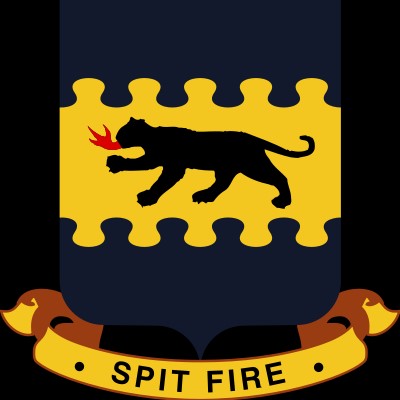Bell P-39L/Q Airacobra
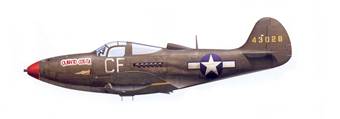
P-39Q-20 44-3028 QUANTO COSTA of 1st Lt. Samuel Curtis, 100th FS, Capodichino, Italy, May 1944
Development of the P-39
In February of 1937 the USAAC issued a
specification for a new single-engine high altitude interceptor. The
specification included 1000 lbs. of heavy armament, forward firing
cannon, turbo-supercharger, tricycle landing gear, and a level
airspeed of 360 mph. It was thought that this aircraft should have a
time to altitude of 6 minutes to 20,000 ft. The Bell Aircraft
Company had limited experience in the development of fighter
aircraft of the type, but were nonetheless willing to create a
design to meet these requirements.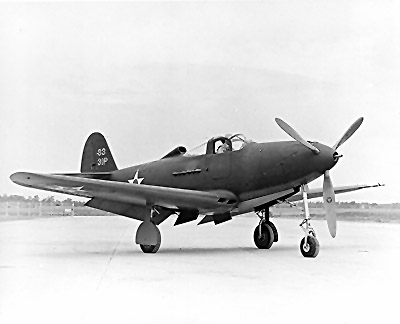
The innovative design selected would place the Allison V-12 liquid cooled aircraft engine amidships to accommodate a large 37mm Oldsmobile T9 Automatic cannon in the nose of the aircraft. This presented the Bell engineers with significant challenges in creating a propeller driveshaft design that would meet the USAAC's specifications. Other than the innovative thinking on engine placement the Airacobra incorporated many ideas that were uncommon on fighter aircraft seen around the world.
For instance, the tricycle landing gear gave the pilot great visibility during taxi, takeoff, and landing. The cockpit could be accessed from either side through automotive style doors which could be easily jettisoned for egress by pulling a release lever.
Also, due to the engine being centered in the middle of the aircraft, the design would offer better center of gravity and balance; making the Airacobra a stable gun platform for the 37 mm cannon. The propeller shaft was engineered to run under the pilot seat through a gear reduction housing. This made servicing the Airacobra difficult to say the least. One of the other major issues with the Airacobra was feeding outside air to the engine compartment for cooling. Most radial and inline aircraft engines of the time were installed in the front of the aircraft. This made air induction for cooling a relative non-issue.
The Bell engineers tried many designs. The
final configuration in which we recognize the Airacobra today has a
dorsal air scoop affixed just behind the engine compartment. The
many innovations gave way to as many manufacturing issues as well.
The landing gear of the Airacobra was notoriously weak. Many a USAAF
pilot collapsed the nose gear of a Airacobra and skidded into a
crash landing. Another issue with the Airacobra was the seepage of
carb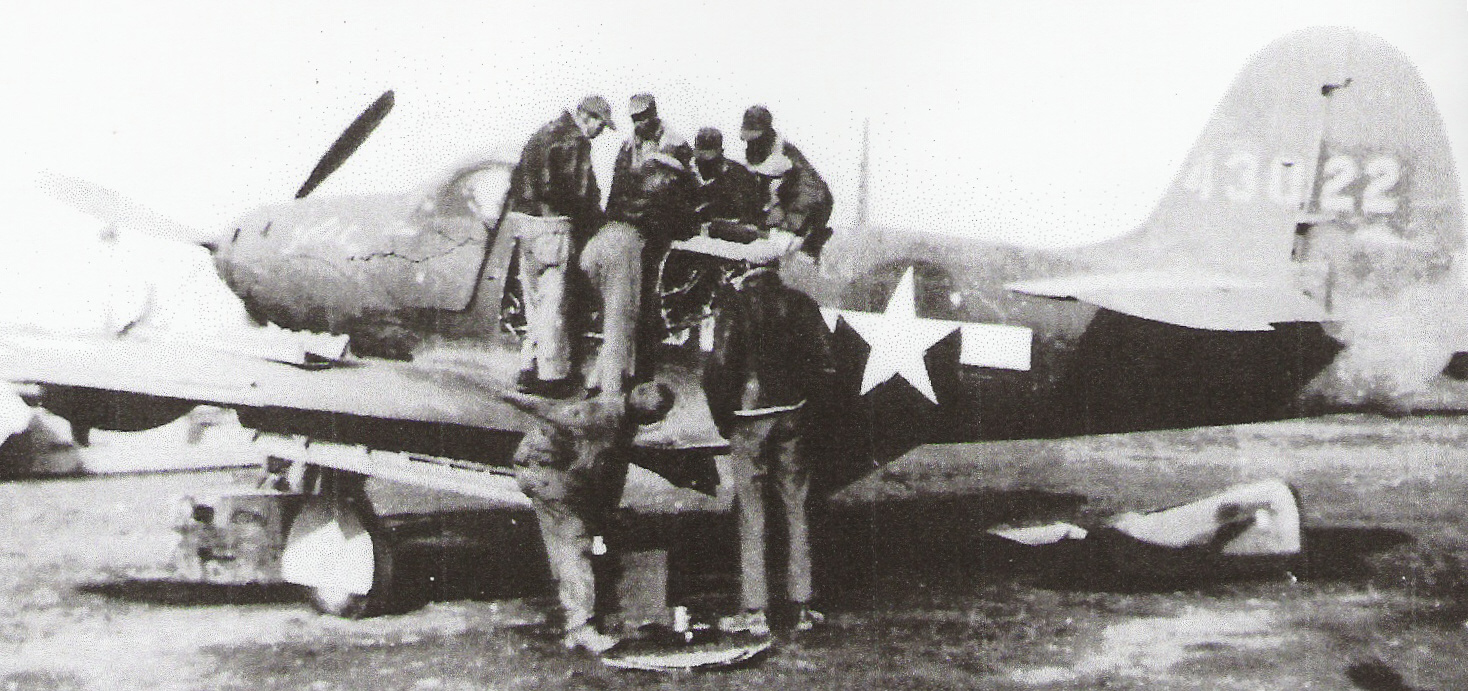 on
monoxide fumes into the cockpit. This became such a problem that
pilots would need to wear their oxygen mask from start up to shut
down. The one most distinct problem with Airacobra was self imposed
by the USAAC. As time went on with the development of the Airacobra
the Air Corp changed the mission of the fighter from single-engine
high altitude bomber interceptor to low altitude ground attack and
support aircraft, hence no need for the turbo-supercharger. This
single change turned the Airacobra into an overnight washout.
on
monoxide fumes into the cockpit. This became such a problem that
pilots would need to wear their oxygen mask from start up to shut
down. The one most distinct problem with Airacobra was self imposed
by the USAAC. As time went on with the development of the Airacobra
the Air Corp changed the mission of the fighter from single-engine
high altitude bomber interceptor to low altitude ground attack and
support aircraft, hence no need for the turbo-supercharger. This
single change turned the Airacobra into an overnight washout.
Now, without the turbo supercharger the aircraft could not meet the minimum specifications that were issued by the Army Air Corp. Although the aircraft retained a certain degree of maneuverability at low altitudes, it could no long be the effective fighter as it was initially intended. The Airacobra would see frontline service in most theaters of the war. Only to be withdrawn because of its woeful lack of performance against Axis aircraft.
The highlight of the Airacobra's service
during World War II was the Lend Lease p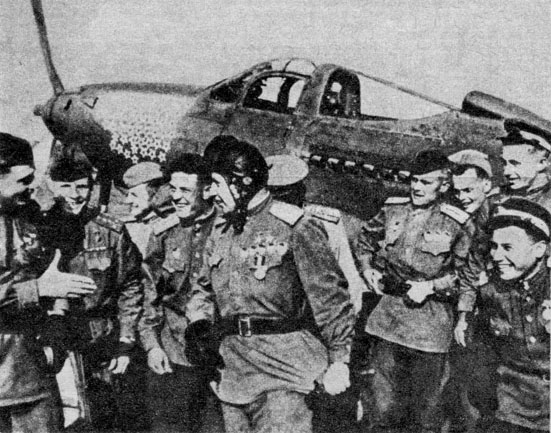 rogram.
At the outset of the war the British needed aircraft and pilots to
man them. The Germans were moving rapidly to seize the whole of
Europe with "Blitzkrieg" or Lightning attacks. Although many
countries ordering the Airacobra were dismayed by its final
performance figures, they needed fighting aircraft and they needed
them quickly. So the Airacobra went into service. The Airacobra was
so outclassed by the ME-109s, FW-190s, Macchis and Zeros that it was
relegated to service as a trainer and ground attack aircraft by most
foreign nations that continued to use it; except for the Russians.
After the British refused to take delivery of anymore of these
aircraft.
rogram.
At the outset of the war the British needed aircraft and pilots to
man them. The Germans were moving rapidly to seize the whole of
Europe with "Blitzkrieg" or Lightning attacks. Although many
countries ordering the Airacobra were dismayed by its final
performance figures, they needed fighting aircraft and they needed
them quickly. So the Airacobra went into service. The Airacobra was
so outclassed by the ME-109s, FW-190s, Macchis and Zeros that it was
relegated to service as a trainer and ground attack aircraft by most
foreign nations that continued to use it; except for the Russians.
After the British refused to take delivery of anymore of these
aircraft.
The British P-39 acquisition was wholly turned over to the VVS. The Soviet Air Forces, which took delivery of more than half of all the P-39s manufactured, would use the P-39s effectively against the Luftwaffe. The German campaign "Barbarossa" in its initial stages routed the Soviet Army and Air Forces. Destroying countless pieces of equipment as it moved closer to its objective. The Soviets needed equipment and badly. They say that the mother of necessity causes man to create new and innovative ways to succeed.
The Soviet Air Force used the low altitude performance and handling characteristics along with the 37mm cannon of the P-39 to devastate the Luftwaffe aircraft in eastern Europe. For one particular Soviet pilot, the Airacobra was the mount of choice. Aleksandr Pokryshkin the leading Soviet fighter ace of the war shot down a total of 59 enemy aircraft of which 48 were completed in the Bell P-39 Airacobra. In fact 9 of the top 10 Soviet aces of the war had 27 or more kills in the Airacobra. The aircraft had been adapted to new fighter tactics which served the Soviet VVS well. Pokryshkin a master aircraft mechanic as well a fighter pilot was enamored with the Airacobras firepower. He even rigged the fire button to fire all forward firing guns simultaneously for maximum kill power; his reengineering paid huge dividends.
The 332nd Fighter Group goes to war!
The 332nd fighter Group had
arrived in Montecorvino, Italy on 5 February 1944. The men had heard
rumors that they would be equipped with the Lockheed P-38 Lightning
or maybe the all new Bell P-63 Kingcobra. What they found on the
field waiting for them to mount up and fly off were a large number
of older Bell P-39 Airacobras. These aircraft had been handed down
by other squadrons, most likely the 350th FG, after their
transit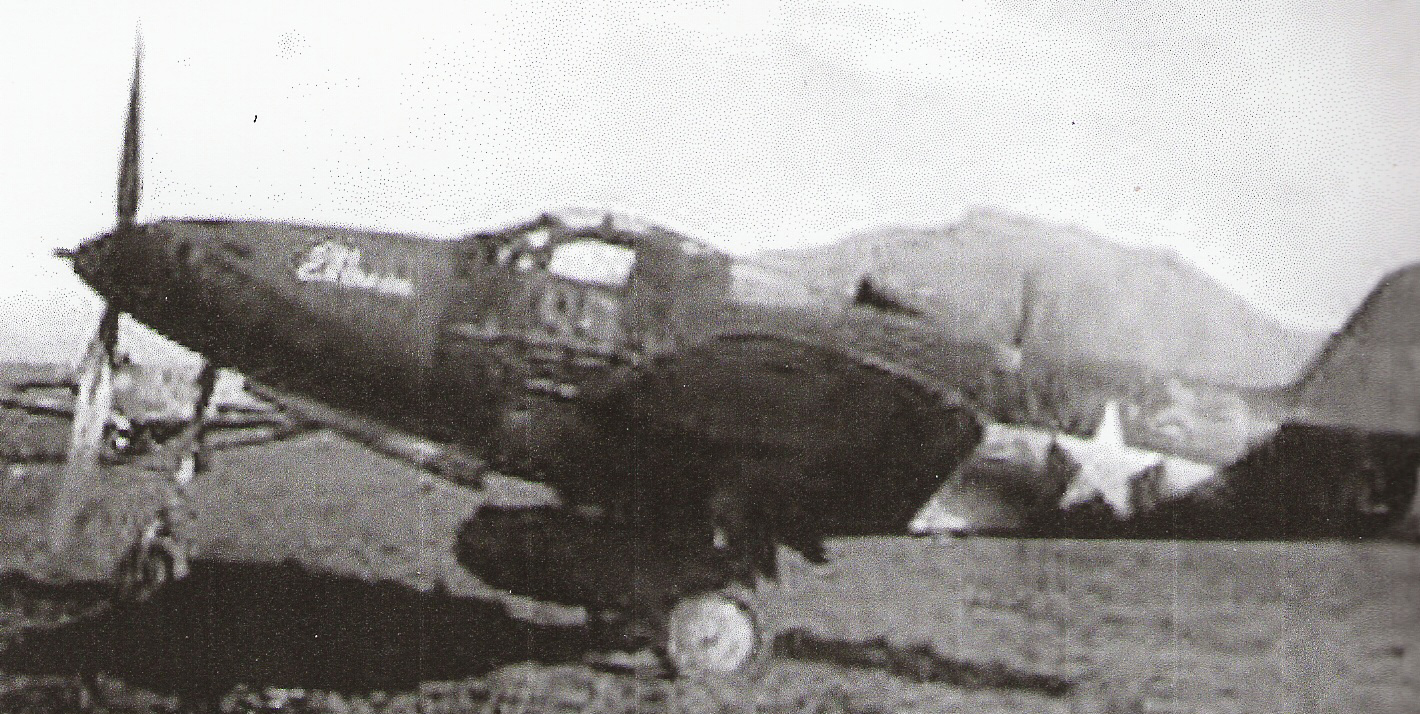 ion
to the P-47 Thunderbolt. The 100th Fighter Squadron flew
their first mission in the P-39 the same day of their arrival at
Montecorvino. These P-39s were war weary and in need of replacement.
Yet they soldiered on in service to the 332nd FG. As
mentioned before these aircraft were prone to all types of failures
and unreliability; engines, undercarriages etc. These aircraft
battled their way across North Africa, Sicily, Southern Italy and
now at the end of what was considered a long service life the
Airacobras would return to the skies of Italy.
ion
to the P-47 Thunderbolt. The 100th Fighter Squadron flew
their first mission in the P-39 the same day of their arrival at
Montecorvino. These P-39s were war weary and in need of replacement.
Yet they soldiered on in service to the 332nd FG. As
mentioned before these aircraft were prone to all types of failures
and unreliability; engines, undercarriages etc. These aircraft
battled their way across North Africa, Sicily, Southern Italy and
now at the end of what was considered a long service life the
Airacobras would return to the skies of Italy.
The 332nd FG was assigned coastal patrols in the Cape Palermo, Gulf of Policastro, and Ponziane Island areas. In true Airacobra fashion, being the seeming under achiever. The 332nd went aloft in their fighters to find the enemy. On one such patrol near the mouth of the Naples harbor two pilots of the 302nd FS spotted and pursued a JU-88 that was flying a reconnaissance mission in the area. The pilots were able to catch and fire upon the JU-88 damaging the aircraft. Showing its true lack of performance, the bomber was able to evade destruction by climbing and accelerating away from its pursuers. In the three to four months that the 332nd Fighter Group flew the P-39 Airacobra there were no enemy air to air kills claimed by the group.
Of course there was a feeling of anger amongst the pilots of the group as they felt the Airacobras were issued to the group to ensure that they were unsuccessful in the assigned missions. After a time the Airacobras were replaced with the higher performance Republic P-47D Thunderbolts. Throughout its service life in the MTO from Tunisia to Rome the P-39 had a less than satisfactory record with all groups that it served with. American fighter groups flying the Airacobras from November of 1942 to April of 1944 lost 107 Airacobras in air to air and air to ground combat. These same groups claimed a similar number of aircraft destroyed on the ground, but only 20 aircraft shot down in air to air combat during the same period. Shortly after April of 1944 the Airacobras were pulled from front line service to be used as trainers for the remainder of its service life. A very small handful of pilots throughout the USAAF made ace in this aircraft. The 332nd Fighter Group would move on to a great combat record in higher performance types never to see the Airacobras again.
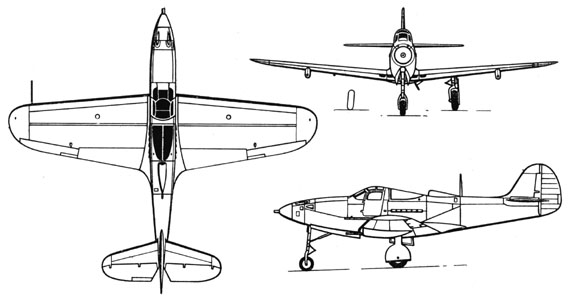
Bell P-39L/Q Airacobra Specifications
| Power Plant: | Allison V-1710-85 12 Cylinder Liquid Cooled |
| Horsepower: | 1,200 HP |
| Maximum Speed: | 376 MPH |
| Rate of Climb: | 3,333 ft/min (1,016 m/min) |
| Maximum Range: | 650 miles |
| Service Ceiling: | 35,900 ft. |
| Aircraft Weight: | 5,645 lbs. Empty weight 7,570 lbs. Normal weight, 8,100 lbs. Maximum takeoff weight |
| Wingspam: | 34 ft. |
| Height: | 12 ft. 5 in. |
| Length: | 30 ft. 2 in. |
| Wing Area: | 213 sq. ft. |
| Armament: | One 37mm Oldsmobile cannon firing through the propeller hub. Two 50 cal. browning machine guns mounted in the nose adjacent to the cannon. Two more 50 cal. machine guns could be mounted in hard points on each wing. |
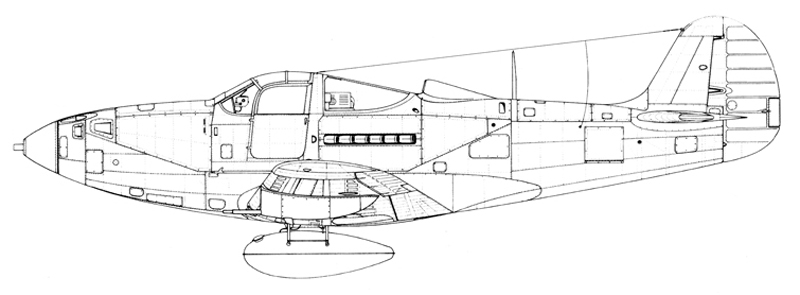 |
|

